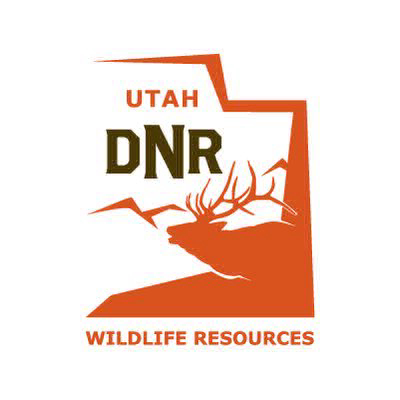
|
The Utah Wildlife Board approved a few new and updated rules, some of which are necessary after recent legislative changes — including the wildlife management area license requirement for certain counties and the new process for regulating hunting guides and outfitters — along with a few other proposals during a public meeting Thursday.
Updates to WMA license requirement exemptions
During the 2025 legislative session, a new law was passed that requires anyone 18 years old or older to possess a hunting, fishing or combination license to access a wildlife management area or waterfowl management area in counties that are designated as "class one" or "class two" counties, which includes Davis, Salt Lake, Utah and Weber. The law also updated the definition of a WMA, and under that new definition, there are less than 30 WMAs in the four counties where this new legislation applies.
The Utah Wildlife Board approved a few updated rules to provide additional clarifications to the new law requirements:
“Wildlife and waterfowl management areas are primarily funded by the sales of Utah hunting, fishing and combination licenses and by federal excise taxes — which are paid on hunting and fishing equipment,” Utah Division of Wildlife Resources Lands Coordinator Chelsea Duke said. “Typically, state taxes do not pay for these properties. The funds from license sales go toward wildlife conservation in Utah, so having a current license is a great way to support wildlife conservation, land acquisition, management and habitat restoration. These properties are not multi-use recreational areas like other state and federal public lands and are specifically designated to conserve critical wildlife habitats and to provide places where Utahns can go to hunt, fish and enjoy wildlife-related recreation.”
Additional information about the WMAs that will require licenses can be found on the DWR website.
New rules for outfitters, guides and spotters
A new law was passed during the 2025 legislative session to allow the Utah Department of Natural Resources to regulate hunting guides and outfitters in the state. Previously, guides and outfitters were regulated by the Utah Division of Professional Licensing. The law requires a guide, outfitter or spotter — someone who is being paid to assist individuals in hunting or fishing activities — to obtain a certificate of registration and pay a fee to the DWR. The new legislation outlines the parameters of when a guide, outfitter or spotter can be compensated for their services and when their certificate of registration can be revoked.
The board approved new rules to clarify more about the application process, field requirements, prohibited activities and other details required by the new legislation, including:
The changes all go into effect July 1. Additional information about the application and the fees can be found on the DWR website.
Dedicated Hunter rule amendments
The Dedicated Hunter Program is a service-based hunting program that allows participants to have more time to hunt deer each year. Participants are required to complete 32 hours of DWR-approved service (or pay for their hours) in order to qualify for deer permits through the program. They enroll in the program for a three-year period and can harvest two deer during that period if they meet the service requirements.
The board approved a few changes to the program to allow new program participants to earn service credit prior to joining the program. However, the service hours have to meet the following criteria:
The change will go into effect Jan. 1, 2026.
The board also approved a few administrative rule changes for the program, including clarifying what happens when a hunt is canceled or a hunt unit is discontinued and clarifying that purchased service hours and performed service hours are nonrefundable and nontransferable.
Conservation Permit Program rule amendments
Utah’s Conservation Permit Program was launched in 1980 in an effort to increase funding for conservation projects for fish and wildlife throughout Utah. Each year, the Utah Wildlife Board designates a small percentage of limited-entry and once-in-a-lifetime hunting permits as “conservation and expo permits.” The conservation permits are offered to conservation and sportsmen’s groups, who then auction them at banquets, fundraisers and other events. The conservation groups must allocate 90% of the money raised from these permit sales toward conservation and research projects like habitat enhancement, wildlife transplants, aerial surveys and deer survival studies. The remaining 10% of the proceeds are retained by the conservation groups to help cover administrative costs.
The wildlife board approved a few updates to the Conservation Permit Program, including:
Public land variance requests for CWMUs
The DWR oversees the Cooperative Wildlife Management Unit program, which allocates hunting permits to private landowners who then provide hunting opportunities to public and private hunters for a variety of wildlife species. The CWMU program in Utah has opened more than 2 million acres of private land to the public for hunting.
For 2025, there were four applications from CWMUs requesting the inclusion of public land — two new applications and two renewals. The board approved all of the CWMU applications.
Sage-grouse translocation updates
Sage-grouse are typically relocated to augment existing populations and to introduce populations into new or historically populated areas. The board approved the translocation of greater sage-grouse from the Blue, Diamond and Parker mountains — which fall within the Uintah and Parker Sage-grouse Management Areas, respectively — in order to increase sage grouse distribution in the following areas:
The last time sage-grouse were translocated in Utah was 2019.
Rule amendments for possession and release of pen-reared game birds
The board also approved a few updates to the rule regarding individuals possessing or releasing pen-reared game birds, including:
The board also voted to appoint Gary Nielson as the new chair of the Utah Wildlife Board, as the board term of Randy Dearth — the current board chair — ends in August. The board also appointed Paula Richmond as the new vice chair of the wildlife board.
You can watch the full meeting on the Utah Department of Natural Resources YouTube channel.